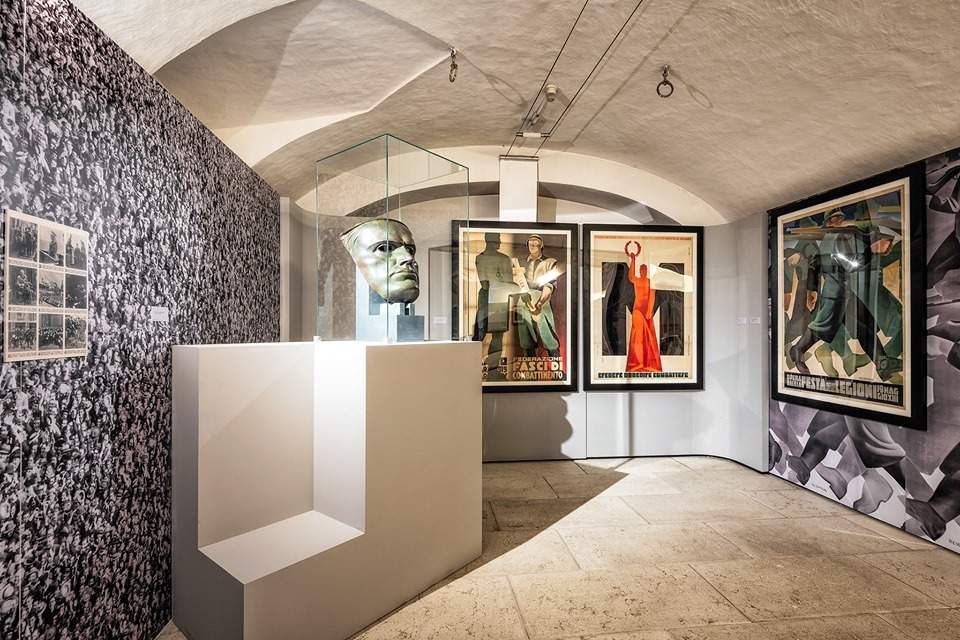From May 2 to July 14, 2019, the Galleria d’arte moderna “Carlo Rizzarda” in Feltre is hosting the exhibition Artisti del Ventennio - il Novecento, entirely dedicated to the artists of Novecento, the group founded and promoted by critic Margherita Sarfatti (Margherita Grassini; Venice, 1880 - Cavallasca, 1961). The exhibition aims to reconstruct the history ofart developed under Fascism through the works of the artists most immediately traceable to that season. The exhibition itinerary, curated by Tiziana Casagrande (curator of the city museums of Feltre), consists of forty-three works, including works by the “magnificent seven,” that is, the founders of Novecento(Anselmo Bucci, Leonardo Dudreville, Achille Funi, Gian Emilio Malerba, Piero Marussig, Ubaldo Oppi and Mario Sironi), and works by artists who worked at the time, such as Giorgio De Chirico, Carlo Carrà, Arturo Marini (present with a bronze of Titus Livy for the Liviano in Padua, and from the Liviano, moreover, there is also a sketch for the fresco on the main wall, created by Massimo Campigli), and Adolfo Wildt (present with a Mask of Benito Mussolini on loan from the Cavallini-Sgarbi Foundation in Ro Ferrarese).
“Recounting the Fascist twenty-year period is never a trivial matter,” explains Alessandro Del Bianco, councillor for culture for the City of Feltre. "The exhibition Artisti nel Ventennio, which was created as an impromptu side initiative to the 2019 Reading Marathon, dedicated to Antonio Scurati and his novel M. Son of the Century, certainly does not pretend to recount it in its entirety, but it wants to offer visitors an important glimpse of a political temperament that sees in art the reflection of historical dynamics that, at the beginning of the century, literally turned world history upside down. The second part of the 20th century often saw a polarized confrontation in which fascism became the object of discrimination, and this in many cases prevented an in-depth analysis of the phenomenon, including on the artistic-cultural level. Today, however, precisely the ideological component is gradually fading away, memory is gradually turning into history, and generations have an increasingly tenuous connection with the Resistance parable. Society is changing, and someone has rightly written that precisely in society, even before politics, ’the psychophysical characteristics of the fascist individual’ are re-emerging. How should the world of culture stand before this phenomenon? Can it remain indifferent and continue to interpret major exhibitions or events for purely commercial purposes? We believe not, and in the conviction that cultural events have first and foremost a social-educational role, we propose this exhibition, together with the entire program of the Reading Marathon to which it is linked, as a contribution to reflection on such an important issue in today’s society."
The Feltre exhibition also makes use of a stage set designed by architect Giuliana Zanella. It can be visited during the opening hours of the “Carlo Rizzarda” Gallery of Modern Art: until June 14, Tuesday through Sunday and holidays from 10:30 a.m. to 12:30 p.m. and 3 p.m. to 6 p.m.; from June 15, Tuesday through Thursday from 10:30 a.m. to 12:30 p.m. and 3 p.m. to 6 p.m.; and Friday, Saturday, Sunday and holidays from 9:30 a.m. to 6 p.m. For all info you can visit Visit Feltre.
Pictured: Adolfo Wildt, Mask of Benito Mussolini (c. 1924; bronze, 56 x 49 x 22 cm; Ro Ferrarese, Cavallini Sgarbi Foundation)
 |
| An exhibition in Feltre on the art of fascism and the Novecento group |
Warning: the translation into English of the original Italian article was created using automatic tools. We undertake to review all articles, but we do not guarantee the total absence of inaccuracies in the translation due to the program. You can find the original by clicking on the ITA button. If you find any mistake,please contact us.